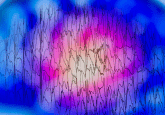Phosphorylate to combobulate: key kinase target identified in the pathogenesis of genetic epilepsy

The mechanism behind a type of genetic epilepsy known as CDKL5 deficiency disorder has been elucidated, highlighting a potential target for novel therapeutic approaches.
In a recent paper, researchers from the Francis Crick Institute, University College London and MSD Research Laboratories (all London, UK) detail the discovery of a potential therapeutic target for a genetic form of epilepsy called CDKL5 deficiency disorder (CDD). The team used a phosphoproteomic approach to identify the calcium channel target, taking the first steps in developing a specific treatment for CDD.
CDD is a developmental and epileptic encephalopathy, characterized by seizures, impaired development and a loss-of-function mutation in the gene that codes for the kinase CDKL5, which phosphorylates proteins. The connection between this loss of function and the condition’s symptoms has not been clearly defined and treatments extend only to generic antiepileptic drugs.
To illuminate the pathogenesis of CDD and identify a potential target for a specific therapy, the researchers first conducted a stable isotope labeling of amino acids in cell culture (SILAC)-based phosphoproteomic screen to search for Cdkl5 substrates in Cdkl5 KO and wildtype mice. By comparing the phosphorylation levels between the two cohorts, the team was able to identify the calcium ion channel Cav2.3 as a substrate of Cdkl5 in the mouse neurons.
 What do traumatic memories look like?
What do traumatic memories look like?
A new study shows that when individuals with PTSD recall traumatic events, each person displays different brain activity, which is markedly different from when they recall a sad or neutral memory.
Cav2.3 is conserved in humans and, as a calcium channel, has a clear conceptual link to epilepsy. The influx of calcium into a neuron is largely responsible for its activation and electrical function; however, if the influx is too great, it can lead to seizures. This is supported by evidence in the literature demonstrating that the deletion of Cav2.3 in mice protects them from tonic-clonic seizures, while a gain-of-function mutation in the human iteration of this channel leads to severe epileptic encephalopathy.
To confirm this causal link, the team took whole-cell patch clamp recordings of HEK293 cells to monitor the activity of human Cav2.3 in the presence and absence of CDKL5. They found that in the absence of CDKL5, the rate at which the electrical excitation decayed was significantly slower, indicating that the Cav2.3 channels were able to open and allow calcium to enter the cell, but were much slower in closing without phosphorylation by CDKL5. Further investigations using nerve cells generated from the stem cells of patients with CDD confirmed the decrease in phosphorylation of Cav2.3 in these cells.
Commenting on the impact of these findings, first author Marisol Sampedro-Castañeda (the Crick Institute) stated that their research, “highlights for the first time a CDKL5 target with a link to neuronal excitability. There’s scattered evidence that this calcium channel could be involved in other types of epilepsy too, so we believe that Cav2.3 inhibitors could eventually be tested more widely. Our findings have implications for a large group of people, from the families affected by these conditions to researchers working in the rare epilepsy field.”





